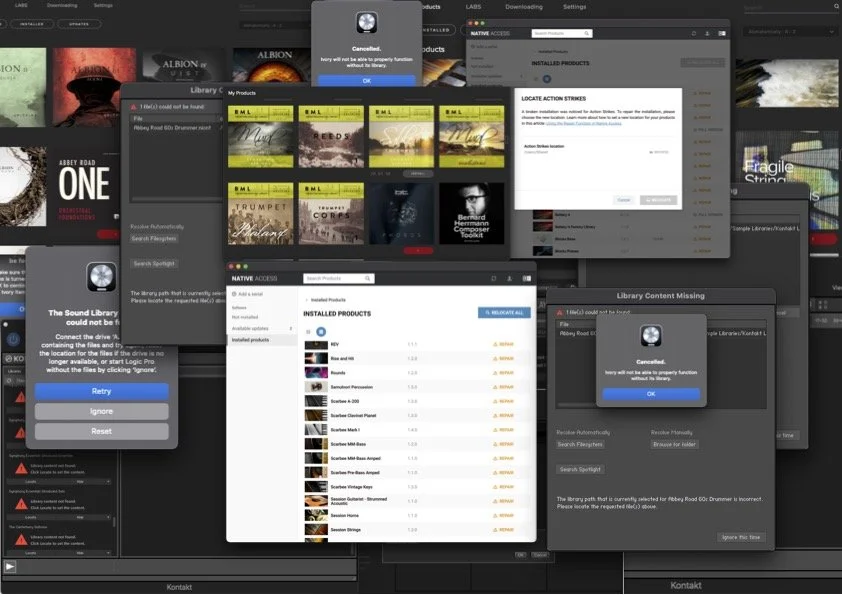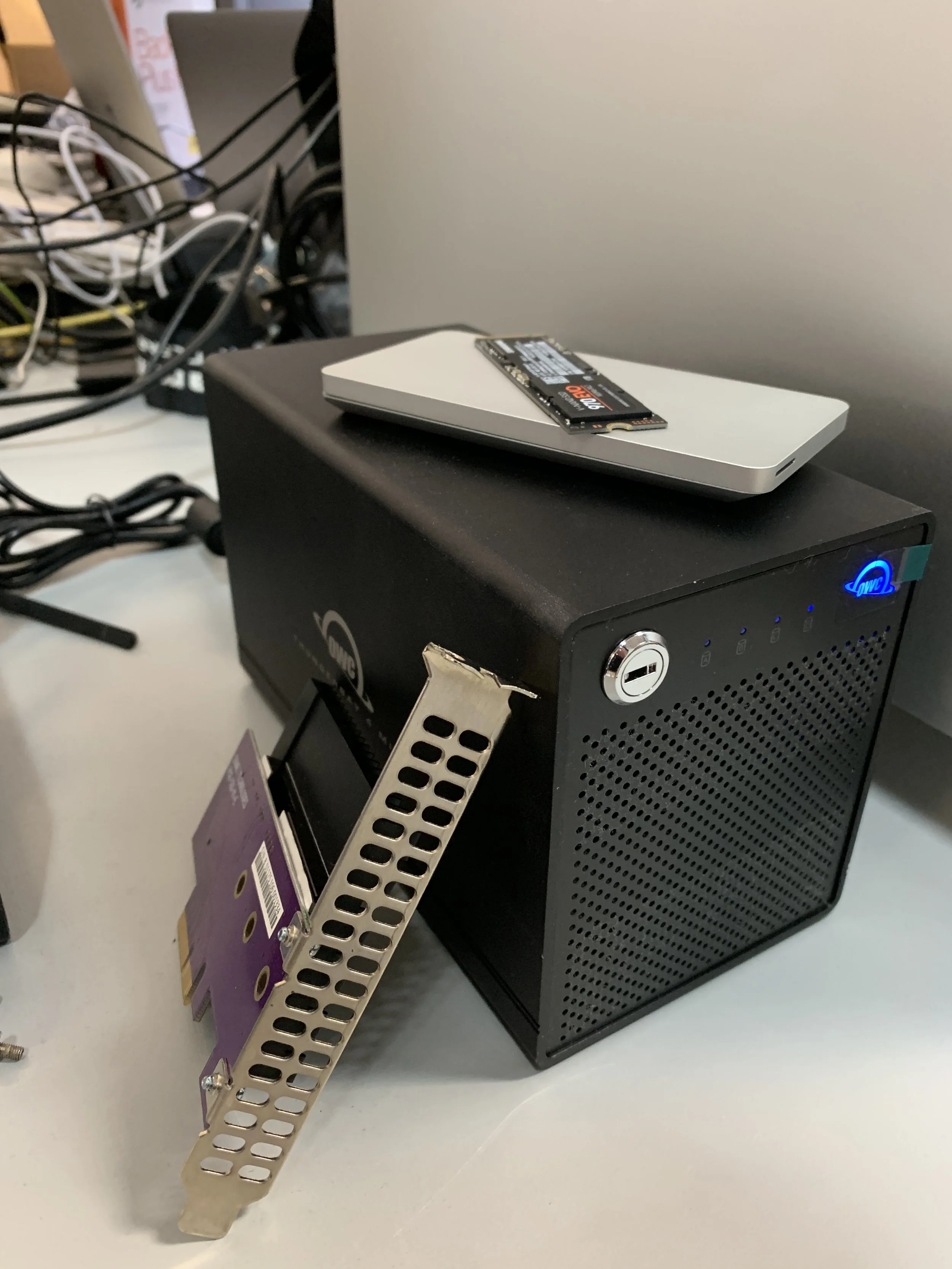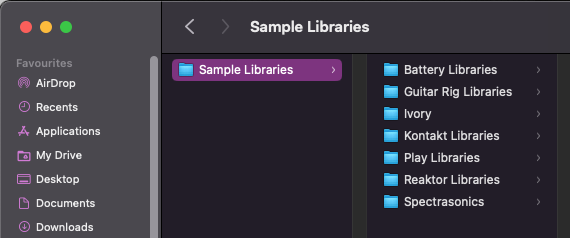So you’ve just purchased the latest epic library and can’t wait to explore the creative possibilities, only to find your DAW has no idea what you’re on about. Next thing you know, you’ve spent hours trying to find out whether this new sample library was actually installed, where it was downloaded to, and why your DAW still can’t find it!
Distractions like this are the bane of many composers’ existance, especially when creativity strikes or another deadline looms. Unlike our previous post - Tidy Studio, Tidy Sound - it’s somewhat harder to relish in the chaos and fallout caused by a poorly organised file system.
If you’re already finding the collage of error messages a little triggering, fear not - we’re here with some useful tips and approaches for getting your sample libraries organised.
What’s the point?
Reliability
Whilst organising your file structure may not be at the top of your to do list, it isn’t just for show. Ensuring each element of your computer system is configured optimally will save you stress and time in the long run.
If you’re using multiple systems having recently invested in a mobile rig, or working collaboratively, for example, filing structure consistency between the different systems is crucial here. Generally speaking though, once you’ve invested the initial outlay in getting your file structure in shape, maintaining it becomes much simpler task!
Space
One often overlooked benefit to keeping on top of the organisation of your sample libraries is that, along the way, you may well discover duplicates, failed downloads or installers which can all be removed, freeing up valuable storage space. When carrying out this work on a client’s system recently, we managed to free up more than 4TB!
Where to start?
With a plan! Sounds obvious, but you’ll want to find out:
Where your sample library data is stored?
How large are your sample libraries?
What player your sample libraries use?
If you only have a handful of sample libraries, or only own libraries from a single manufacturer, this should be relatively easy to figure out. Some sample library application managers even include this information in a useful and central place, but sadly not all.
Once you have answers to the above questions, you can then make an informed decision on how best to organise your sample libraries.
Dedicated storage
This is often the easiest step towards keeping your sample libraries organised. Many of you may have already invested in dedicated, external storage for your samples, projects, or both, especially with limitations on upgrading internal storage on most computers these days. That being said, with the increasing capacity of internal storage, you may even be in the position to keep things local. Just remember if you’re running a mobile rig alongside your main system, you’ll want to keep storage identical between rigs, and don’t forget to consider your backups!
Now, there are numerous things to consider if looking into dedicated storage - NVMe vs SATA, SSD vs HDD, Internal vs External, RAID 0 vs RAID 5, USB vs Thunderbolt, and so on.
Fortunately, our CTO Antony has already gone to the trouble of researching most of these options in great detail for you, so if you haven’t read his excellent and extensive blog on DAW Storage Performance, it’s well worth a read!
Getting organised
Once you’ve decided on the technical side of things, it’s time to get your file structure organised. We like to create a file structure on a dedicated volume called ‘Sample HD’ with a directory named ‘Sample Libraries’ containing sub directories, organised by manufacture.
Next, you’ll simply need to relocate your sample libraries’ content to your newly organised file structure. Bear in mind though that any change to the file path of your sample libraries will also need to be manually updated in each library’s application manager as well as within any pre-existing projects. Once your samples libraries have been organised to a central place, tools like Kontakt Quickload Builder can make accessing and browsing your libraries much easier and quicker!
Content Location vs Download Location
Trying to decipher where each manufacturer thought the most logical place for its content to be stored can be tricky. However, both the Download and Content Locations are usually available within the settings or preferences of the sample library manager application. If not, you may need to track down each library in order to check this manually.
Whilst we’re delving into path locations, now’s probably a good time to go over what these paths actually refer to.
Download Location simply refers to the location where the sample library manager will download installers to, before then installing and moving the content to the Content Location, where it will remain.
A common issue we often see is usually caused by a lack of available storage in the Download Location. This in turn prevents new libraries from being downloaded, despite there being ample storage available in the Content Location, assuming this exists on a different volume. It’s usually best to keep the Download Location on the main system drive to allow for optimal speed when downloading and installing new libraries.
Is there an easier way?
If by this stage it all sounds a little daunting, don’t fear - we’re well versed in organising, fixing and maintaining sample libraries file structures and data storage on behalf of our clients and is a service we provide. If you’d like to talk more about how we can help orgnaise, fix or streamline your current system then please get in touch!




